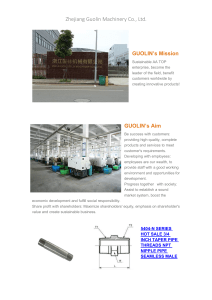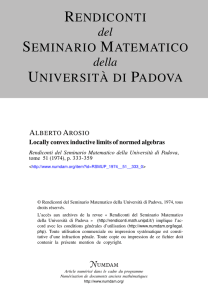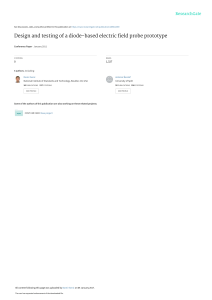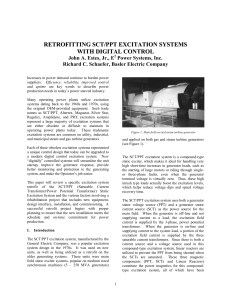caricato da
carlobambi
PFC Topologies: Efficiency & Cost Benchmarking
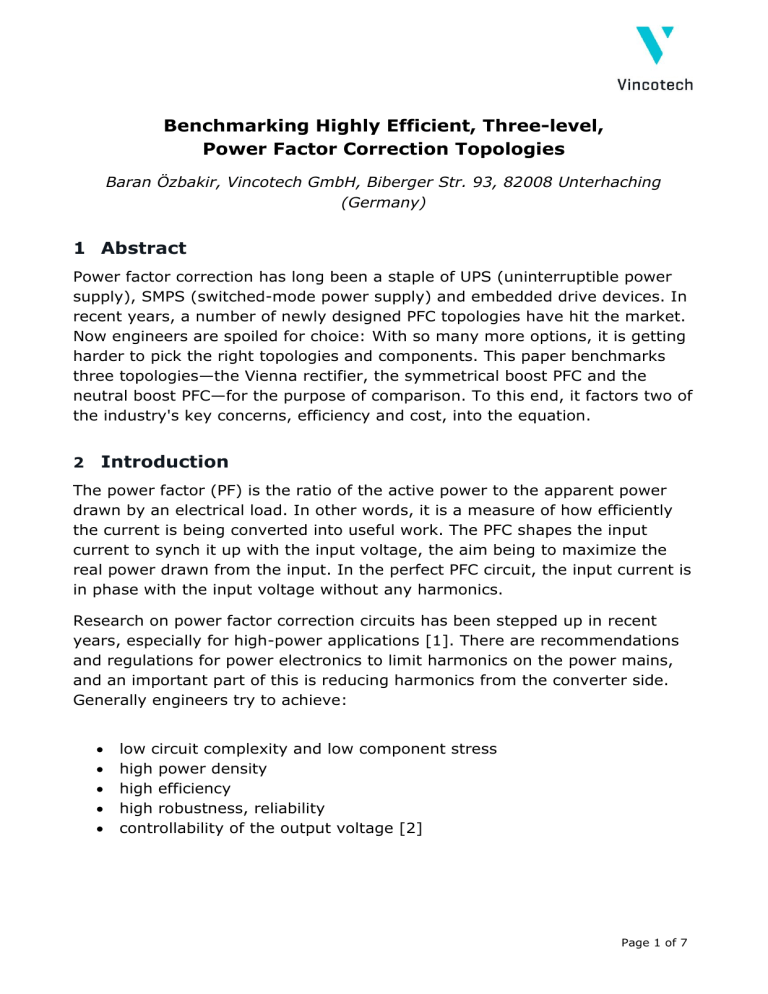
Benchmarking Highly Efficient, Three-level, Power Factor Correction Topologies Baran Özbakir, Vincotech GmbH, Biberger Str. 93, 82008 Unterhaching (Germany) 1 Abstract Power factor correction has long been a staple of UPS (uninterruptible power supply), SMPS (switched-mode power supply) and embedded drive devices. In recent years, a number of newly designed PFC topologies have hit the market. Now engineers are spoiled for choice: With so many more options, it is getting harder to pick the right topologies and components. This paper benchmarks three topologies—the Vienna rectifier, the symmetrical boost PFC and the neutral boost PFC—for the purpose of comparison. To this end, it factors two of the industry's key concerns, efficiency and cost, into the equation. 2 Introduction The power factor (PF) is the ratio of the active power to the apparent power drawn by an electrical load. In other words, it is a measure of how efficiently the current is being converted into useful work. The PFC shapes the input current to synch it up with the input voltage, the aim being to maximize the real power drawn from the input. In the perfect PFC circuit, the input current is in phase with the input voltage without any harmonics. Research on power factor correction circuits has been stepped up in recent years, especially for high-power applications [1]. There are recommendations and regulations for power electronics to limit harmonics on the power mains, and an important part of this is reducing harmonics from the converter side. Generally engineers try to achieve: low circuit complexity and low component stress high power density high efficiency high robustness, reliability controllability of the output voltage [2] Page 1 of 7 3 PFC Topologies 3.1 Vienna Rectifier The Vienna rectifier is a unidirectional pulse-width modulation (PWM) rectifier as shown in Fig. 2. It was first proposed by J.W. Kolar and developed with F.C Zach at the Technical University Vienna [3]. The Vienna rectifier is used mainly in telecom power supplies, UPS and input stages of AC drive converter systems. Figure 2 – The Vienna rectifier Its specifications and working properties at a glance: 1 switch (DT) 4 rectifier diodes (DN+, DN-, DM+, DM-) 2 fast diodes (DF+, DF-) DT works at both half waves DF+ and DF- are the pairs of DT Voltage drop at excitation : 1x IGBT + 2x rectifier diode Voltage drop at boost (freewheeling) : 1x rectifier diode + 1x fast diode Page 2 of 7 The Vienna rectifier's biggest advantage is that is equipped with just one switch, which cuts costs and simplifies control. On the down side, static loss is relatively high during the excitation period. On top of that, the switch works at both half waves of the mains input current, and engineers need to carefully consider the thermal behavior. 3.2 Symmetric Boost PFC (SPFC) The symmetric boost PFC (Fig.3) is a mainstay topology widely used in several applications such as UPS, welding, and power supplies. Figure 3 – Symmetric boost PFC Its specifications and working properties at a glance: 2 2 2 2 fast switches (T13-T14) rectifier diodes (D11, D12) fast diodes (D14, D13) protection diodes (D43, D44) D11 and D12 work during one full half-wave T13/D14 and T14/D13 are the pairs Voltage drop at excitation : 1x IGBT + 1x rectifier diode Voltage drop at boost (freewheeling) : 1x rectifier diode + 1x fast diode Page 3 of 7 Although the SPFC topology is equipped with two switches—that is, one more than the Vienna rectifier—its static losses are still low during the excitation period. 3.3 Neutral Boost PFC (NPFC) The NPFC (Fig.4) is another commonplace topology used mainly for UPS applications. Figure 4 – Neutral boost PFC Its specifications and working properties at a glance: 2 fast switches (T13-T14) 2 rectifier diodes (D11, D12) 2 fast diodes (D14, D13) T13/D14 and T14/D13 are the pairs Voltage drop at excitation : 1x IGBT + 1x rectifier diode Voltage drop at boost (freewheeling) : 1x fast diode The NPFC topology also has one more switch than the Vienna rectifier, but the D13 and D14 diodes switch between DC+ and DC-, which increases switching and static losses. 4 Benchmarking the Topologies' Efficiency and Cost Six different power module designs were created, characterized and simulated to enable comparisons of the various topologies' costs and efficiency. Table 1 Page 4 of 7 lists the simulation parameters; these are representative of typical three-phase applications. VIN 240 VRMS IIN 14 ARMS VOUT 700 VDC Table 1 – Simulation parameters Fig. 5 graphs the topologies' efficiency from 4 kHz to 50 kHz for comparison. To this end, the semiconductors' efficiency was calculated to benchmark the various types of power modules and see how the different designs measure up. Figure 5 – Efficiency comparison The following Fig.6 charts the normalized cost of power module designs. Page 5 of 7 Figure 6 – Cost comparison As the efficiency chart would indicate, the NPFC topology with MOSFETs and SiC diodes appears to be most efficient solution throughout the frequency range. The NPFC topology with fast IGBTs and Si diodes performs well up to around 12 kHz, at which point it drops off and soon after intersects with the Vienna rectifier's curve. The SPFC topology with fast IGBTs and SiC diodes comes in second in the performance stakes. The SPFC topology with fast IGBTs and Si diodes keeps pace with the Vienna rectifier (a fast IGBT and SiC diodes) up to around 36 kHz. The SPFC topology with fast IGBTs and fast Si diodes serves as the reference for cost comparisons. The Vienna rectifier, with a price tag just under the reference price, has the cost advantage. The NPFC topology with MOSFETs and SiC diodes is the most expensive solution, costing 3.4 times as much as the reference design. The SPFC topology offers the best compromise between cost and efficiency, which makes it the overall winner. Page 6 of 7 5 Conclusion Although the NPFC topology with MOSFETs and SiC diodes achieves the highest efficiency, it is also the most expensive solution. The NPFC solution is more efficient than the Vienna rectifier up to around 12 kHz when IGBTs and silicon diodes are used. The Vienna rectifier with a fast IGBT and fast Si diodes and the SPFC solution with fast IGBTs and fast Si diodes are cost-efficient solutions. If we consider the conditions for real-world applications, the frequency range from 12 to 36 kHz is where the best tradeoff between efficiency and cost can be made. This is precisely where the SPFC topology comes out on top. This conclusion is confirmed by an emerging trend in the UPS and ESS (energy storage system) markets, where power modules featuring this promising SPFC topology are on the rise. Vincotech anticipated this development and now offers the flowSPFC 0 family of power modules for up to 100 A, with higher power modules to soon follow. 6 References [1] Jingtao Tan, Zhiqiang Jiang Li C. Yang Li L. Yang Li ; Ying, Single-Phase Three-Level Boost Power Factor Correction Converter; IEEE (2007) Jianping: [2] Johann W. Kolar, Hans Ertl, Franz C. ZACH.: Design and Experimental Investigation of a Three-phase High Power Density High Efficiency Unity Power Factor PWM (VIENNA) Rectifier Employing a Novel Integrated Power Semiconductor Module; IEEE (1996) [3] Kolar J.W., Zach F.: A Novel Three-Phase Utility Interface Minimizing Line Current Harmonics of High-Power Telecommunications Rectifier Modules; IEEE (1994) Page 7 of 7
